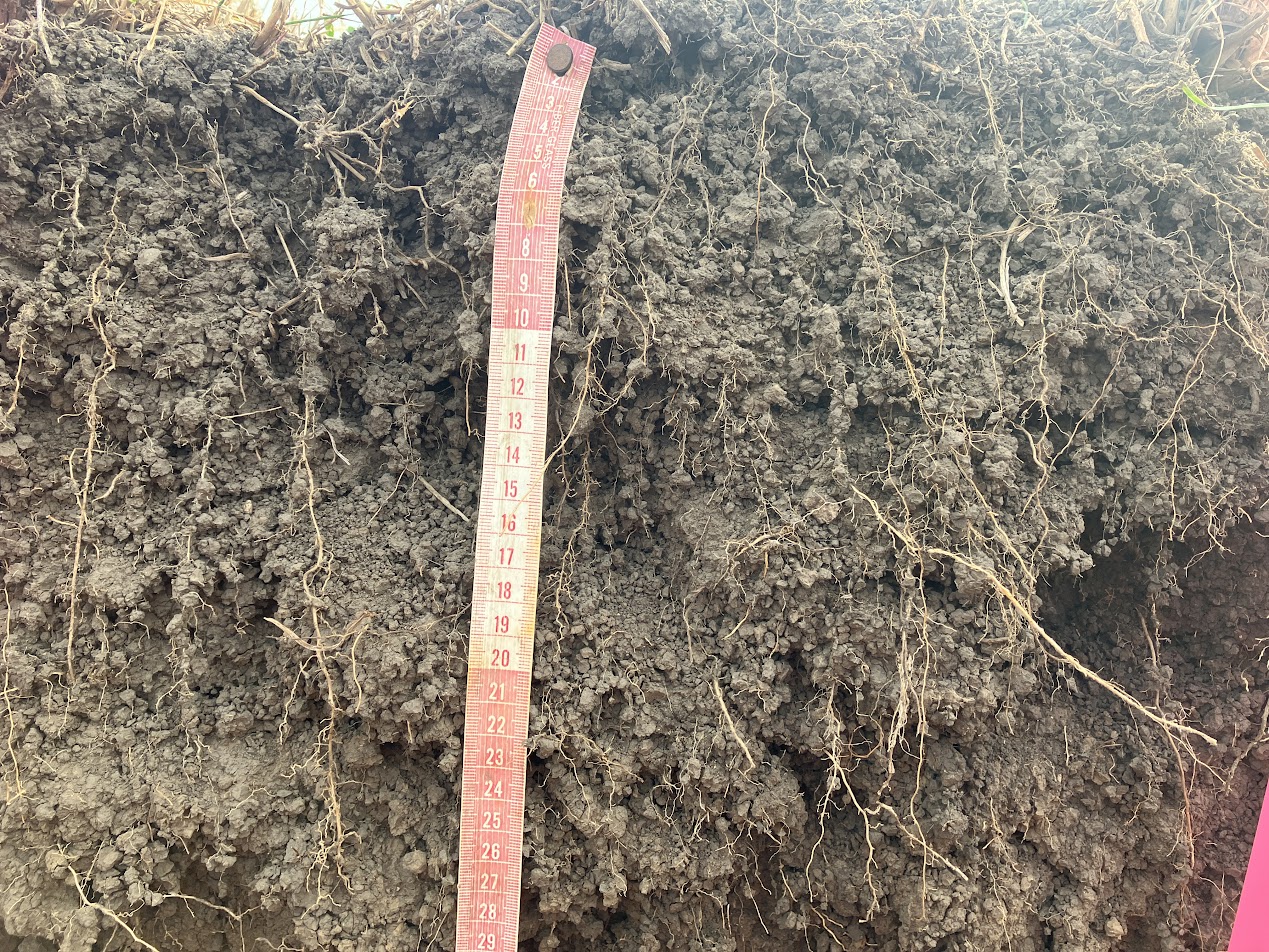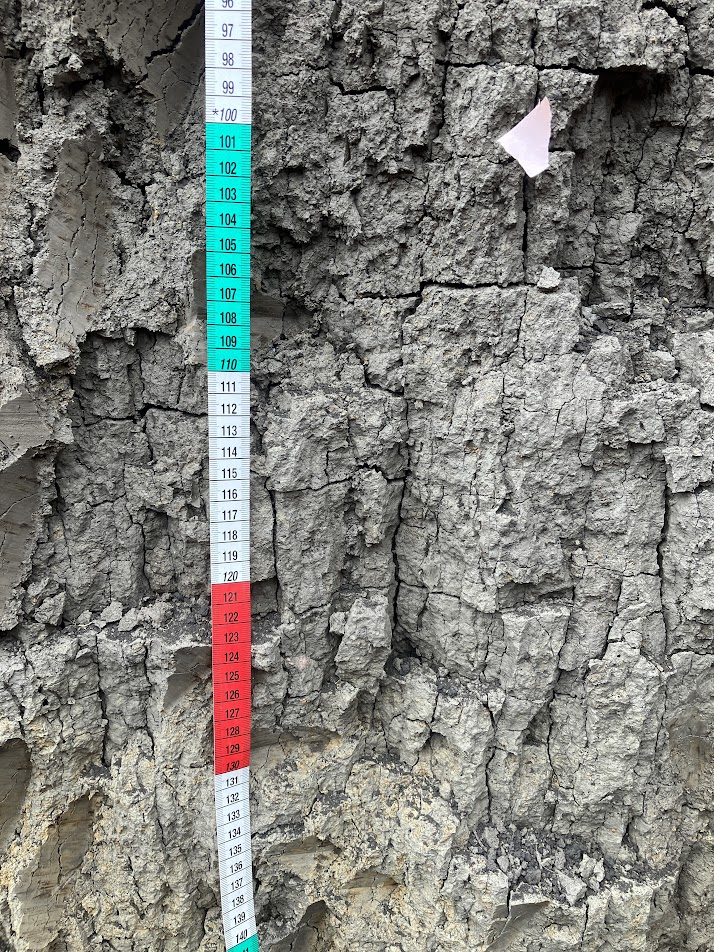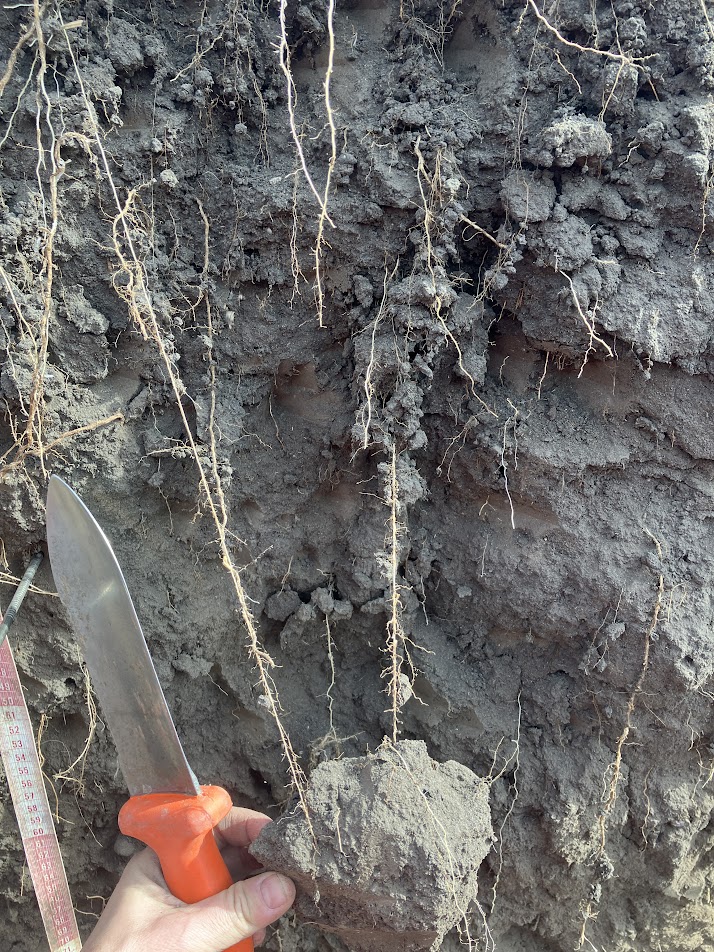Soil Structure
Amber Anderson; Lee Burras; Gerald Miller; and Erin Smeltzly
Soil structure refers to planes of weakness that develop as a soil undergoes changes. Individual particles of sand, silt, and clay are grouped together to find larger aggregates. For contest purposes, select the most dominant structure in the requested horizon.
Granular
These aggregates are roughly spherical. Granular structure is commonly found in less disturbed or compacted A horizons, generally with higher organic matter. The photo example is from a pasture in Northwest Iowa.
Prismatic
These structures are significantly taller than they are wide. Well-developed B horizons can be one place to find these structures, but may occasionally occur elsewhere.

Platy
These structures are commonly found in E horizons. These units are significantly wider than they are tall. In some cases, a compacted surface soil will appear to have plates. While these are not formed in the traditional manner, students may have difficulty distinguishing the two, so we will include that compaction structure within platy.

Structureless
In these areas, the soil does not have structure significantly different from when it was deposited. You should select one of the following options:
Massive
While materials can stick together, soil breaks where pressure is applied instead of pre-formed planes of weakness.
Single Grained
Individual sand grains, lacking the fine materials to stick together. These structures are found in sandy materials where it is not possible to remove large aggregates of soil profile without them falling apart as in a sandbox.

- Soil structure is defined as the planes of weakness that develop as a soil undergoes changes.
- Granular aggregates are roughly spherical and are commonly found in A horizons that have higher contents of organic matter.
- Blocky structure is common in B horizons or under cultivated A horizons. The blocks can have angular or rounded corners.
- Prismatic structures are significantly taller than they are wide and can be found under well-developed B horizons.
- Platy structures are wider than they are tall and are commonly found in E horizons.
- Soil that does not have structure significantly different from when it was deposited is structureless. It can be either massive or single grained.
- Massive structures breaks where pressure is applied instead of in pre-formed planes of weakness.
- Single grained structures are individual sand grains that lack the fine materials to stick them together.



